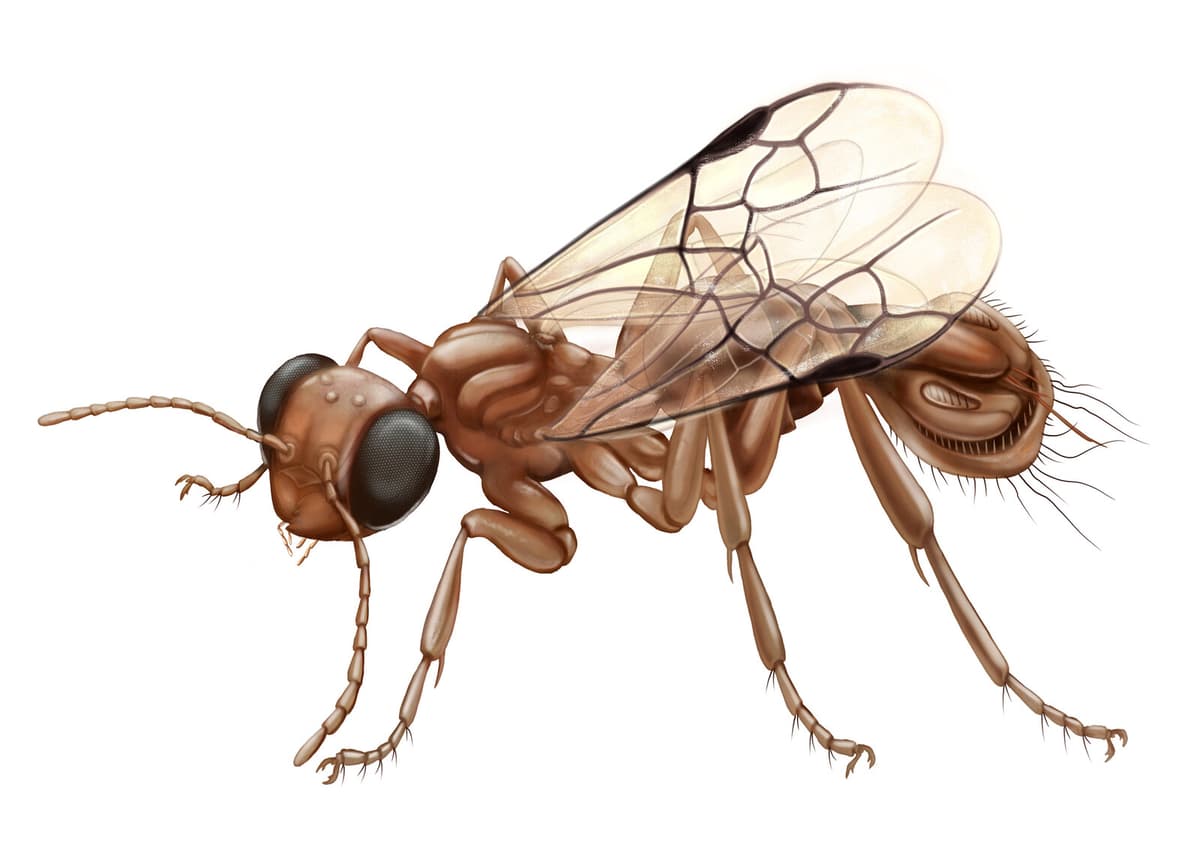The fly or grasshopper did not suspect what would happen. When it landed on the wasp-like surface, the trap snapped shut – and before it managed to fly away, its body had been injected with wasp eggs.
Researchers imagine that the unique wasp female acted in this way, based on 16 females fossilized in amber 98.79 million years ago, during the Cretaceous period.
It was completely incredible. I have never seen anything like it. As with all research discoveries, it took a little time before it sank in, says Lars Vilhelmsen at the Statens Naturhistoriske Museum in Copenhagen.
Thought "wow"
He and colleagues at CNU in Beijing have examined the finds using micro-CT scans.
When I first saw this lump at the end of the body, I thought it had to be an air bubble. But when I checked a few specimens, I thought "wow". I have studied insects for 30 years and never seen anything like it.
The wasp's tail opened with three flaps, and looked roughly like a carnivorous plant. Presumably, it snapped shut when an unsuspecting insect sat down.
You don't need to swallow the whole prey to lay the egg in it, you just need to hold it still long enough to do it, he says.
If the wasp's body visually resembled a flower, or if it used scent or color to lure its prey, the researchers do not know. But presumably, it was not fast enough to hunt its prey, and instead functioned more like a trap.
Ate from the inside out
The egg or eggs that were injected hatched later in the host after it flew away, and ate it from the inside out.
No males have been found.
They may have lived in a different environment, where they were not as likely to be preserved as the females, says Vilhelmsen.
The researchers have described the wasp species Sirenobethylus charybdis, which lived during the Cretaceous period, at the same time as dinosaurs like Spinosaurus.
The researchers have examined 16 females fossilized in amber using micro-CT scans. The finds were made in present-day Myanmar.
The insect's rear consisted of three parts that could be folded out, which has no equivalent in the insect world. Among the finds are both open and closed specimens. The researchers believe that they were used to catch prey (other insects) to inject them with eggs.
The study is published in the journal Biomed Central





